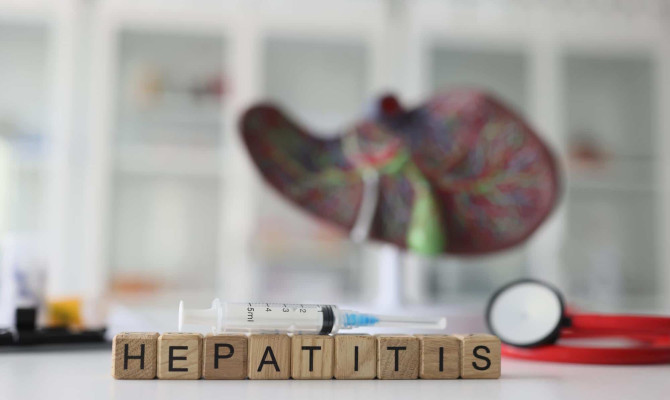Leg Pain : Symptoms, Causes and Treatment

- Leg Pain
- 16 Aug 2023
Overview
What is Leg Pain?
Leg pain is a typical symptom after an accident or other trauma, but it can also be a sign of many different disorders. Depending on the underlying cause, leg pain can be mild to severe, and the symptoms can be persistent or intermittent.
Leg discomfort is either acute (short-lived) or severe, lasting a few days to a few weeks. With self-care, it frequently gets better on its own. Leg discomfort that lasts between four and twelve weeks is referred to as subacute leg pain.
On the other hand, chronic leg pain lasts for three months or longer, even after the initial injury or the root cause of the pain has been treated. Fewer persons who experience acute leg pain also experience chronic leg discomfort. This indicates that the pain may last a lot longer than anticipated, and in some instances, it may be challenging to manage chronic lower leg pain.1Overview| Researched based study from Harvard.edu

Symptoms
Symptoms of Leg Pain
Leg pain may only affect a small portion of the leg, or it may spread to include the entire leg. The discomfort may be subtle or acute, burning, tingling, or numb. Additionally, your foot, lower back, or spine, as well as your buttocks, could hurt. Make a note whether one leg differs from the other or if both legs appear to be the same.
Few other signs and symptoms of leg pain include
- A wound that heals slowly
- Ulcers or sores
- Redness, swelling or warmth sensation
- Varicose veins
- Generally feeling unwell, in case of infection or fracture
- If you have a nerve issue, you can notice changes in the color of your legs or feet
If you experience chest pain, dizziness, or difficulties breathing in addition to leg pain, make sure to get medical attention right away as this could be an indication of a blood clot.2Symptoms| Researched based study from Healthdirect.gov
Causes
Leg Pain causes
Muscular origin
- This is typically the case for pain that starts after quick or frequent movements and lasts for a while.
- Most of the time, cramps, soreness, stiffness, or pulled, strained, or torn muscles are the cause for the pain.
Nerve origin
- This is a cause for chronic pain that frequently affects the entire leg or the thigh. This kind of discomfort is a sign of cruralgia or sciatica, both of which are caused by a pinched nerve in the lower back.
Vascular origin
- A blood clot in an artery, phlebitis, or venous insufficiency are all examples of major circulation issues that can cause this type of pain, which typically only affects one leg.
Bone origin
- This is typically the case of pain that is connected to a specific physical activity or pain that develops after an injury. This discomfort is therefore a symptom of ailments like bone tumours as well as traumas like fractured bones and hairline fractures.3Causes| Researched based study from Mayoclinic.org
Other causes
Leg pain may also results due to one of the following reasons:
- Diseases like Gout, Arthritis, spondylitis
- Malnourishment including deficiency of vitamins and minerals
- Infections like sepsis, cellulitis3Causes| Researched based study from Mayoclinic.org
Types
Types of Leg Pain
Leg discomfort can affect people differently. Burning discomfort that travels down the leg may originate in the low back or buttocks. Often, tingling or numbness makes the limb feel as though it has dozed off before waking up. However, low back pain or numbness can be persistent and have an impact on everyday living, unlike when a limb regularly falls asleep. Numerous conditions can cause leg pain.
The most typical types of leg pain are listed below
Sprain
- A sprain happens when a ligament is ruptured or stretched. The tissue band that connects the bones of a joint is called a ligament. Although a sprain can occur at any joint, the most common affected joints are the ankles, knees, and wrists.
- Sprains frequently arise from twisting and falling, rolling the ankle, or taking a blow to the body that causes it to move from its natural position.
- Rest, ice, compression, and elevation of the leg, in that order, can be used to treat a moderate sprain or twisted ankle. For a broken bone or more serious sprain to heal properly, a cast may be required. Physical treatment may also be required.
Shin splints
- Shin splints develop when the tendons and muscles positioned beneath the shin bone suffer injury or inflammation, making walking uncomfortable. Shin splints may be more common in people with flat feet or those who walk with their feet turned outward. This ailment typically gets better with rest and ice.
Tendinitis
- Tendinitis or tendonitis refers to the swelling or irritation of a tendon. Tendons are substantial fibrous threads that join bones and muscles. Any tendon can experience tendinitis, which can either be acute or chronic. It could become difficult to move the injured joint. Pain and soreness in the affected area are the main signs of tendinitis.4Types| Researched based study from Painscale.com
- Tendonitis may cause pain in the lower portion of the leg. This could be brought on by inflamed or damaged tendons in the lower calf or close to the back of the heel. The overuse of the legs or stair climbing are the two main causes.
- Traditional therapies include resting for a few days and applying ice to the area to lessen inflammation. In the event that a torn Achilles tendon is the cause of extreme pain, a medical practitioner will probably administer an injection of medication. Occasionally, surgery may be required.
Varicose veins
- Weak vein walls and valves are the root cause of varicose veins. After prolonged standing, they could develop a dull discomfort. There are support stockings available to help with pain relief. The leg muscles can be strengthened by exercise as well.4Types| Researched based study from Painscale.com
Muscle cramps
- Dehydration can sometimes produce muscle cramps, which are easily cured by consuming more water. Sports drinks can aid with electrolyte replacement. When a muscle has stiff up, it may also be beneficial to gently massage the uncomfortable area. If muscle cramps are severe and persistent, speak with a medical expert.
DOMS
- DOMS, or delayed onset muscle soreness, is a form of muscle pain that ranges in intensity from mild to excruciating. It arises after strenuous exercise, hours or days later. Although there is no recognised cause, it is most frequently experienced when starting a new activity after a break from it. NSAIDs (nonsteroidal anti-inflammatory medicines) and a few days of rest from strenuous activity can be beneficial.
Sciatica
- Sciatica, also known as sciatic nerve pain, is pain that develops when the lower back’s sciatic nerve root gets compressed, irritated, or inflamed. Discomfort caused by the sciatic nerve can be felt in the legs and buttocks.4Types| Researched based study from Painscale.com
- The most frequent causes are spinal stenosis, bone spurs, and ruptured or sliding discs. The length of the symptoms and whether one or both legs are affected determine the type of sciatica. Acute, chronic, alternating, and bilateral kinds of sciatica are prevalent.
Blood clots
- One possibility for a blood clot, a potentially fatal condition, is sudden, intense, or severe leg pain that is accompanied by swelling and soreness in one leg.
- When blood hardens and collects in a vein, a blood clot develops, which is a medical emergency. A blood clot can develop in a deep bodily vein, as one in the thigh or lower leg, leading to deep vein thrombosis. They frequently manifest after prolonged periods of inactivity, like those experienced during a vehicle or plane travel. The risk is also increased by smoking, being overweight, and some drugs4Types| Researched based study from Painscale.com
Diagnosis
How to diagnose Leg Pain?
Leg pain is typically minor and goes away on its own, but in some cases it can be complex and needs to be evaluated by a medical professional or pain specialist who will take the time to listen to the patient’s pain story and conduct a physical examination before recommending a diagnosis and course of action.
Medical history
- In order to identify any underlying diseases or risk factors that might be causing your leg pain, your doctor will inquire about your medical history. DVT risk can be increased by a family history of blood clots, including elderly relatives who have experienced myocardial infarction and stroke.
- Additionally, your physician will inquire about any previous leg fractures or injuries. When discussing your diagnosis and treatment choices, it’s critical that you disclose any prior wounds, operations, or health issues that might be relevant.
Physical examination
- A doctor will start by questioning you about your symptoms, level of discomfort, and length of time you have had it. They could also ask you to explain the pain’s exact location and whether any numbness or tingling is present. They can utilize this to distinguish between various leg pain scenarios.
- After that, a physical examination will be performed to determine what is causing the discomfort. To distinguish between various structures in this area, they could use their hands or ask you to indicate out where your discomfort is located. It’s crucial that you maintain as much stillness as possible throughout the test and avoid jerky movements if they bring you more discomfort.
Imaging tests
Imaging tests may be necessary in some cases. Imaging examinations can be done with X-rays, CT scans, MRIs, bone scans, or ultrasounds.
MRI scan
- An MRI may be advised if your doctor thinks you have a tumour or an infection.
- People who have leg pain that lasts more than six weeks, are older than 50, or smoke cigarettes frequently undergo this procedure because these conditions raise the risk of deep vein thrombosis (DVT).
Neurological diagnostic blocks
- In this technique, a steroid or anaesthetic is injected directly into the leg pain location.
- This shows whether the feeling becomes better after the injection. This can aid your doctor in distinguishing between various pain scenarios. It involves referred pain from another structure, such as the hip or back, as well as muscular strain, fracture, and infection.
Blood tests
- Along with blood tests, they might also advise a complete blood count (CBC) if they think there might be an underlying illness or infection.
- Examples of these include the erythrocyte sedimentation rate (ESR), C-reactive protein, and erythrocyte count. [5]
Treatment

Treatment of Leg Pain
Your treatment options will depend on the underlying cause and severity of the discomfort in your legs.
Home remedies
You might also think about performing home remedies like :
- Drinking lots of water to ease leg cramps.
- Massage and stretching are also beneficial.
- Using heating or cooling packs, soaking in warm water, or simply resting your legs are other options.7
- Make sure your feet are supported with comfy shoes that fit well.
- Lift your leg when you are sitting or lying down.
- Go for physical therapy sessions 4Treatment| Researched based study from Painscale.com
Medication management
Muscle relaxants and anti-neuropathic (nerve pain) drugs are examples of possible prescription drugs. Creams containing analgesic compounds are sometimes used to reduce pain.
Over the counter medicines
- Conservative medicines such over-the-counter aspirin, acetaminophen, or ibuprofen may be used as the first line of treatment. When taken as directed, these over-the-counter drugs can be helpful for some types of leg discomfort.7Treatment| Researched based study from Medlineplus.gov
Steroid therapy
- Dexamethasone injections are one method of managing pain because this steroid can assist to lessen both pain and inflammation. Rheumatoid arthritis, osteoarthritis, and arthritis can all benefit greatly from this.
Nerve blockers
- An injectable therapy called a “nerve block” lessens discomfort from a nerve or multiple nerves. This can aid in the treatment of neuropathic pain, diabetic peripheral neuropathy, and peripheral neuropathy.
Spinal cord stimulation
- A nerve stimulation device must be implanted during the FDA-approved, minimally invasive spinal cord stimulation technique.
- In order to reduce the pain signals brought on by chronic pain, this procedure administers low-voltage electrical currents to specific regions of the spine.
- Candidates for this operation include those who have tried conservative therapy for at least six months and still experience chronic back or leg discomfort. Prior to considering a permanent device, a trial device is implanted.
Takeaway
Takeaway points for Leg Pain
- Raise your leg
- Use over-the-counter pain relievers such ibuprofen or acetaminophen. Without consulting your healthcare professional, do not discontinue taking any medications or alter their dosage
- Get as much rest as you can
- Stretch and massage tense muscles gently
- For up to 15 minutes, use ice. Do this four times daily, initially more frequently [6]
Any feedback on this article?
 This Articles content was accurate
This Articles content was accurate Very Informative Article
Very Informative Article I have a question or a comment
I have a question or a comment
 This article contains inaccurate content
This article contains inaccurate content This article was not helpful
This article was not helpful I have a question or a comment
I have a question or a comment
We appreciate your helpful feedback!
Checkout our social pages
References
-
Harvard Health Publishing
When walking makes your legs hurt | Overview
-
Health Direct
What is leg pain? | Symptoms
-
Mayo Clinic
Leg Pain | Causes
-
Boston Scientific Corporation
Pain-Common Types of Leg Pain | Types
-
Mantra care
Leg Pain: What You Should Know | Diagnosis
-
Mount Sinai
Leg pain | Takeaway
-
Medline Plus
Leg pain | Treatment





































